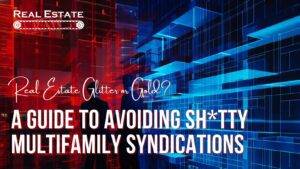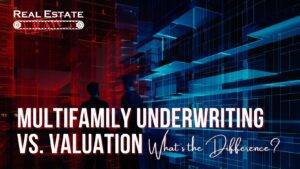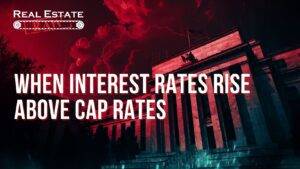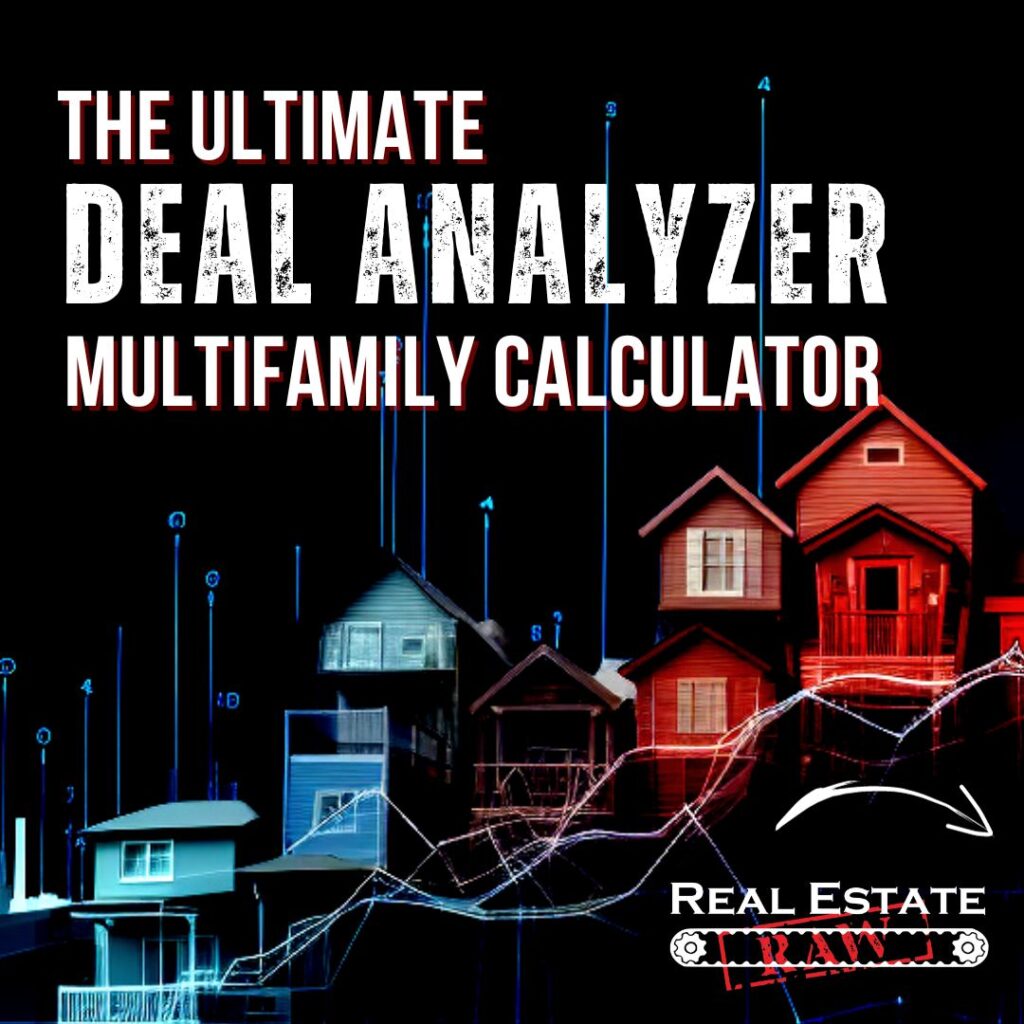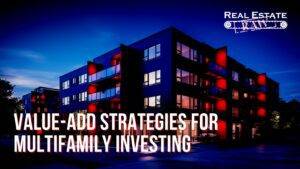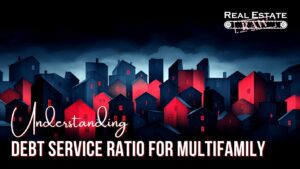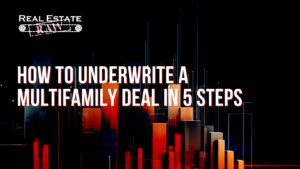This article is a beginner’s guide to multifamily investing.
In this work I will cover these topics.
- What size multifamily property to start with.
- How to choose a multifamily market.
- How to find multifamily deals.
- How to analyze multifamily deals.
- Networking and how to raise capital for multifamily deals.
The first step to investing in multifamily begins with the answers to these three questions.
- What?
- Where?
- How?
What are you trying to buy?
Where is it located?
How are you going to pay for it?
The answers to these questions will give you the basics for getting started in multifamily. Let’s look at each question individually.
What?
What size property are you trying to get started with? You may have an idea already, but you need to be able to apply metrics to the selection process so that you create a system that is repeatable.
Regardless of what you would like to buy, the real question is: what can you buy?
The answer to this question begins with two more questions. Do you plan to pay “all cash” for your next multifamily acquisition, or do you plan to get a loan to buy the property?
For the remainder of this article, I am going to take the point of view that you will be getting a loan/mortgage to buy your next deal. Even if you do have capital to invest, you will likely need to use leverage at some point, if you run out of cash.
Now we begin to create a metric that can be applied to any multifamily market and gives us a better starting point. This metric is your capability to qualify for a certain loan amount. How much cash can you borrow?
Note- I will address multifamily syndication and creative financing for multifamily later in this article. For now, I am covering the basics of the business.
Debt
For this section I will start by contrasting the difference between consumer debt and commercial debt. Most people are accustomed to how consumer lending works but do not understand commercial lending.
It can be said that the borrower is the asset when discussing consumer lending and that the property is the asset in commercial lending. This is one of the major differences.
When qualifying to buy an asset using consumer debt, the borrower (you) will be heavily scrutinized. The lender will look at lots of factors, but the main ones will be your credit worthiness, your personal income, and the appraised value of the property. This is a basic description of getting a mortgage to buy a house for primary residence. Consumer debt.
In commercial lending you (the borrower/s) will still be scrutinized but in a much different way. First is the concept of debt service coverage ratio (DSCR). I will give a full explanation of DSCR later in this work.
As I stated in consumer lending your personal income will be used for the DSCR calculation for the loan but in commercial lending, such as for an apartment complex, the properties net revenue will be used to calculate the DSCR used to qualify for the loan. This will be examined fully in the explanation of DSCR in a later section, as it directly affects the down payment needed for the purchase.
This good news in the sense that your personal income is not that important in a DSCR type loan but there is one catch. In most of these types of lending, the borrower or borrowing team must have a net worth equal to or greater than the loan amount.
For example, if you are looking at a $1,000,000 property for sale. You estimate that you will borrow 75% of the price ($750,000) and put down 25% ($250,000).
Let’s assume you have the $250,000 in cash to put down on the loan but after that you will have no more cash or assets of any real value. This would mean that even though you have the cash for the downpayment you may not qualify for the loan of $750,000 because your total net worth ($250,000) is being invested in the subject property.
This is the most common reason for the use of syndication (JV or GP/LP) and creative financing in multifamily real estate. Both are covered later in this article.
The need for the borrower’s team to have a collective net worth equal to the loan amount is the first metric to be calculated when determining what size property to buy. Here is the method.
- Calculate your (teams) net worth. This is the value of total assets minus any liabilities (debt).
- Take this total net worth and divide it by the average price of a multifamily asset in your market (price per unit). This will give you your net worth (in the number of units) in that market. This is a rough estimate of the size of property you can buy today in that market.
- As you change markets the amount of real estate (units) your net worth will buy changes, but your net worth will not.
- If you want bigger properties, you go to a less expensive market or assemble an equity team with a larger total net worth. I.e., Syndication.
In summary you can only go as big as you can borrow or buy with cash. Not as big as you want to go. Your personal goals for your business growth are notable but you cannot back them up without the equity to do it. This means cash, partnerships, and/or creative financing.
Where?
How to choose a multifamily market.
Multifamily market selection is a key subject when building your multifamily portfolio. There are a few key elements to consider such as population growth, job growth, landlord/tenant laws, price, and many more. I will cover these topics, but I will start with a less considered point of view. Can you show up? That’s it.
In my 20 years of multifamily investment experience, I have realized that typically the best real estate deals come through relationships with the active realtors and sellers in a market. The best way to build relationships with people is to physically meet them. In the multifamily arena this is done with property tours.
A property tour is a quick visit to a property to meet the realtor (possibly seller and management as well) for a tour of the asset. This is not due diligence, so you don’t need to be prepared to conduct a professional inspection. Just a meet and greet at the property.
Showing the listing agent that you are willing and capable of visiting the property starts the relationship in a good manner.
If you are not able to travel to your subject market on average once every six weeks, you may want to consider a market closer to your home. Once every six weeks is just an estimate to convey the point that you need to be able to show up on a regular basis and sometimes quickly.
If you don’t show up, a local will. The person who lives in the market is always the greatest competitor to someone who lives in another area. If you are not local, you will have to show up like a local to be competitive in that market.
Good deals don’t stay on the market long and great deals don’t come to the market at all. They are traded privately through relationships.
The needed relationships are with sellers and realtors in the market. If you have relationships, then you will get calls about potential deals before other buyers do. This is why getting to know people in a market is so important.
Simply going online and looking at deals is good to get going in a market, but you will need to move beyond that level of deal flow, if you want to find better than average deals. Properties that are listed on the internet are extremely accessible by anyone with an internet connection. Everyone sees those deals. They are picked over.
Your job is to build relationships with the agents in the market to be the first notified about FUTURE deals. Not the ones for sale right now. How do you build relationships? Show up.
The second most important aspect of market selection is deal flow. By this I mean your market will ultimately be the total area that produces enough opportunities to build your portfolio. Once you have decided what size deal to begin looking for, you need to analyze those type properties on a regular basis (deal flow). I suggest that your “market” is the total area (collection of cities) that produces at least 3 potential deals a week.
Here is a step-by-step process for choosing a multifamily market.
- Pick a starting point such as your personal residence.
- Imagine your address on a map of your city and now draw a large circle around your address on this map.
- Inside this circle you need to find 3 deals a week.
- The circle will grow until you are comfortably finding 3 deals a week.
- The larger the property size you want to buy the larger the circle.
- The circle may ultimately include multiple cities or even states depending on deal size and availability of properties for sale in each area.
If you are trying to buy duplexes or quadraplexes, you can probably keep the circle to one city. If you are trying to buy 200-unit apartment complexes, you will likely have to cover many cities to be able to find 3 fresh leads a week.
Here are a few other areas to consider when choosing a multifamily market for investing.
- Population growth (for the previous 20 years)
- Thirty percent growth for cities with a population of 250,000 or less.
- Twenty percent growth for cities with a population of 250,000 to 1,000,000.
- Fifteen percent growth for cities with a population of 1,000,000 to 2,000,000.
- Ten percent growth for cities with a population of 2,000,000 or more.
- Median household income growth
- Thirty percent or more growth of the median household income over the last 15 years.
- Crime
- Crime should be declining or at least holding steady in the area.
- Job growth
- Two percent or more annualized job growth in the city if the population is less than 1,000,000.
- One and a half percent or more annualized job growth in the city if the population is more than 1,000,000.
- Median household income
- The median household income should be over $45,000 a year for the area.
- Median rent
- The average rent for the city should be no less than $800 a month.
For current data, visit the Census Bureau and the City-Data websites.
How?
Funding for multifamily properties. How do you plan to pay for the assets? In this section I will cover-
- Traditional Financing for Multifamily
- Syndication for Multifamily
- Creative Financing for Multifamily
Traditional Financing for Multifamily
This is the basics of using a traditional lender to finance multifamily properties.
The fundamental concept here is that you will be borrowing a certain percentage of the purchase price from a lender, and you (your team) will be bringing the down payment to the transaction. At closing the lender will provide their proceeds and you will provide the down payment and that total is given to the seller in exchange for the title to the property.
Ownership of the asset transfers to you or your holding entity (i.e., LLC) and the lender has a lien against the title in the form of a mortgage. If you don’t pay the lender can foreclose.
When describing traditional debt for multifamily there are two types of lenders. Fee-based lenders and transaction-based lenders.
Note- I am taking a bit of license with these terms and using them to generally describe two types of lending agendas not specific lenders as each lending institution can issue either type of debt.
I describe fee-based lenders as institutions that make most of their revenue from fees based on the total relationship with the customer. Besides the interest made from their loans this lender will make revenue from issuing checking accounts, debit cards, money market accounts, and other service-based products. This is most commonly a local bank.
Transaction based lenders make their money from individual loan transactions. This is most common with commercial mortgage-backed securities (CMBS) debt, or the government sponsored enterprises (GSE) such as Fannie Mae (FNMA) and Freddie Mac (FHLMC). You cannot open a checking account and get a debit card at Fannie Mae.
The reason I divide lenders into these two categories is because of the way you will need to interact with each and what motivates each type of lender. If you understand what motivates them, you will have an easier time working with them.
A fee-based lender is much more interested in the total customer relationship they will gain by doing business with you. This means that when you are discussing a loan with this type of lender, you need to be focused on discussing all the ancillary business you will bring if they give you a loan.
This could be in the form of opening the properties operating checking accounts with that lender. If you will be holding tenant deposits, that will be a separate account you will need to open as well as an account for collecting and distributing cash flow.
Show them that starting a lending relationship with you will entail more than you just getting a loan and leaving with your cash.
When dealing with a transaction-based lender like Fannie Mae or Freddie Mac, you the borrower will be vetted for the loan but in a different manner than the fee-based lender and the property itself will be qualified for the loan. This is also the difference between a “recourse” and “nonrecourse” loan.
When working with a local bank or community lender you will likely be applying for a “full recourse” loan. This means that you (and co-guarantors) will be personally responsible for any deficiency judgment in a loan default situation.
Deficiency judgment- this occurs when a borrower defaults on their loan payments, and the subsequent foreclosure or sale of the multifamily property does not generate enough funds to fully cover the outstanding loan balance.
In such cases, the lender can seek a deficiency judgment to recover the remaining balance from the borrower. This means that even after the property is sold or foreclosed upon, the borrower may still be held responsible for paying the difference between the outstanding loan amount and the sale proceeds.
If you get a nonrecourse loan, then the lender agrees to take possession of the asset and to use this as full loan repayment regardless of any deficiency judgment or lack of value at liquidation. Nonrecourse does not mean no risk. There is also what is known as carveouts or “bad boy clauses”.
The carveouts that are included in a loan document will typically nullify the protection of the “nonrecourse” status of the loan if the borrower (you) violates any of the terms listed in the carveouts. These are typically going to be in the realm of “bad behavior” on the part of the borrower. Each loan will be different.
In short it can be said that when dealing with a fee-based lender YOU are the asset. When dealing with a transaction-based lender the PROPERTY is the asset. You’re just guaranteeing the asset.
Multifamily Bridge Debt
This is a general term that is used to describe a short-term loan that usually has an adjustable interest rate and/or is interest only. The proper term for multifamily bridge loans is collateralized loan obligations, or CLOs.
Short term loans can be a very useful tool but may also bring added risk. A short-term loan increases maturity exposure. This is the aspect of having the loan come due quickly. If you have not had time to increase the value properly (or interest rates go up) you may find that your exit will be distressed.
Understanding Debt Service Ratio for Multifamily
When looking to buy an income producing asset such an apartment complex, the lender will likely be issuing a debt service coverage ratio loan (DSCR). This type of commercial lending will consider the borrower’s financial wherewithal but not in the same manner as a consumer loan. The asset that is backing the loan will be analyzed by the lender differently as well.
This form of commercial lending is often described as a balloon note/mortgage. Balloon notes and DSCR are separate concepts, but they are often part of the same debt structure.
For reference- here is the basic formula for evaluating a multifamily deal using the income approach.
Annual Rental Income – Annual Operating Expenses = Net Operating Income (NOI)
NOI – Annual Debt Service (mortgage payment) = Cash Flow
Cash Flow / Acquisition Costs (downpayment and repair costs) = Cash on Cash (Coc)
Now that you have the basic formula for analyzing a multifamily asset let’s take a closer look at the DSCR calculation. This is going to be one of the most important aspects of the lender’s analysis of the property’s financial operations.
Why does a lender use DSCR to value a deal?
The reason lenders use this formula is to calculate the financial ability and probability of the subject property to pay the annual mortgage. In a consumer loan the lender looks at your personal income to cover the majority of the annual debt service but in commercial lending the lender uses the debt service coverage ratio to decide the risk of repayment.
Most traditional lenders like Fannie Mae (FNMA) and Freddie Mac (FHLMC) will typically require a 1.25% DSCR. This means that the lender will want to see that you have $1.25 in net operating income for every $1.00 of annual mortgage payment. 1.25 DSCR. Keep in mind that each lender, borrower, and asset are different.
DSCR will be a major factor in the lender calculating the loan to value (LTV) for an asset.
LTV– is the percentage of leverage that a borrower can get against the value of the property. For example, if a property is worth $100,000 and a borrower can get an LTV of 75% then the lender would be lending $75,000 and the borrower would bring the $25,000 (downpayment).
A lender will use the subject properties DSCR to calculate your LTV. For this equation you need to use the purchase price you are paying for the property. Next calculate the NOI and the annual debt service (use a mortgage calculator).
Divide the annual NOI by the annual debt service. This will give you the DSCR. As stated, most traditional lenders will want to see that the property is producing a 1.25% ratio.
What if the sale price and the loan terms (interest rate) make the DSCR less than the acceptable ratio?
There are only two answers to this question. Pay less or borrow less.
There are three factors that go into determining the DSCR. Sales price, NOI, and annual debt service. Before you purchase (or take control of) the property you will not be able to increase the NOI.
Note- Increasing the net operating income is a function of increasing revenue or decreasing expenses. Neither of which can be implemented until after taking control of the asset. Interest rate has a great effect on the debt service as well, but this is not something that can be generally controlled.
This is the reason that I give the two options, “pay less” or “borrow less”. A lower LTV (more down payment) or a lower purchase price will both result in an increase in the DSCR. These are two items that you can control before purchasing the asset.
Traditional lenders offering the average loan will be calculating the DSCR based on the sellers most recent financial data. This is most likely to be a profit and loss for the last 12 months (T12) and a current rent roll. Discussed further in the Deal Analysis section of this article.
The following formula is how to calculate the down payment for a multifamily loan.
Assuming the purchase price of the asset is fixed-
Income – Expenses = NOI
NOI / Annual debt service payment = Debt Service Coverage Ratio
If the DSCR is less than the acceptable ratio (probably 1.25%) then you must lower the loan amount and increase the down payment. Lower the LTV or “borrow less”.
If borrowing less is not an option, then the only other option is to pay less. Lower the purchase price until you calculate an acceptable DSCR.
This is how to estimate the amount of down payment for a multifamily property based on a lenders DSCR requirements. Keep the NOI and the Purchase price constant and adjust the LTV (down payment) until you get the acceptable DSCR. The answer is your estimated down payment.
Basically said, for a traditional loan you can expect a value (LTV) of about 1.25 DSCR based on the seller’s current NOI and the interest rate being offered by the lender.
Creative Financing for Multifamily
Creative financing for multifamily is defined as the use of any non-standard form of funding for a real estate transaction. The most used forms of creative financing for multifamily are seller financing and master lease options.
Now that I have discussed using traditional debt such as banks and commercial lenders, I will cover how to fund those deals with creative financing.
The first step to creative financing is deal flow. How do you find creative financing deals for multifamily? You don’t.
As described in an earlier section, you need to create systems to produce potential properties to purchase on a regular basis (3 a week). Finding a good deal is a numbers game. You will only find one “good deal” in the dozens that you will analyze.
Creative financing is meant to increase the probability that one of those deals is “good”. That’s it. If you set out to use creative financing only for finding deals, you will be making two mistakes.
- You will miss deals that might be good deals if funded using traditional financing.
- You may appear to realtors and sellers as if you are incapable of funding a deal unless they “give” it to you with creative financing.
Neither are good. When attempting to use creative financing you need to use all your methods to produce buying opportunities (deal flow). Analyze the deal as if you were going to buy the asset using traditional financing. If you find that the deal will not work using this form of financing, then and only then, should you move to creative financing to solve the problem.
The reason I explain it in this manner is actually a function of mindset. You need the proper creative financing mindset to be successful at using it. Here are a few points to remember.
- You did not create the distressed situation the seller is currently in.
- You are the solution to the distressed situation the seller is currently in.
- If the seller does not understand this, you will quicky take your problem-solving abilities to the next seller.
Confidence is the key to being successful using creative financing for multifamily investing. I suggest using what I call the S.P.Y. technique. This is a concept I first introduced in my book Creative Cash: The complete guide to master lease options and seller financing for investing in real estate.
The S.P.Y. Technique
This acronym stands for Seller, Property, You. This is the order in which you should analyze a deal when considering the use of creative financing for multifamily.
Seller- what motivates this seller at the moment? You would be surprised to know how many sellers of multifamily are selling for some other reason than profit. This seller could be a “burned-out” landlord, they may have inherited the property and don’t want it, they may be in a bad partnership. The possibilities are endless. Your job is to discover the real reason a seller is selling.
Property- what is wrong with the property itself? Is there deferred maintenance? Expensive capital expense needs? What about occupancy and operations?
Here you will need to make a full assessment of the condition and operations of the physical asset.
You- lastly, decide what is good for you. What do you need to make this deal work? Is it worth the time and energy to deal with this project? Will there be enough profit in the end? What else could you do if you don’t make this deal?
I find that most people reverse this order only to fail at getting offers accepted. When considering creative financing for multifamily keep in mind that a good deal is 10% real estate and 90% seller. You can have a good piece of real estate, but you don’t have a willing seller, you have nothing.
Yor creative financing offer must be a problem-solving offer. Keep this in mind when analyzing the deal and when creating the offer. This is why I teach S.P.Y. If you try to create value for yourself first, you will fail at creative financing.
Seller Financing for Multifamily
Seller financing is when a seller accepts a mortgage from a buyer instead of cash at closing. With seller financing, the seller may get a down payment from you, but the seller will be acting as the bank and creating a loan at closing. The title will be transferred from the seller to you. At that point in time a lien against the property (your mortgage) will be recorded against the title.
You will now own the property and you have a loan with the seller. If you don’t pay the mortgage per the loan terms, the seller can foreclose on the property just like a bank or traditional lender.
For the seller to truly offer seller financing, they must have 100% equity in the property at the time you purchase it. If they have a mortgage on the property, they will not be able to transfer a clear title to you. Their lender will have a lien against the property in the form of their mortgage.
If a seller has a loan on a property, I suggest using a master lease option.
Master Lease Options for Multifamily
A multifamily master lease option is a combination of two contracts (the master lease and the purchase option) which together give you the right to control the current operations and the future sale.
The master lease is a rental agreement that allows you to “rent” the entire property with the right to sublet the units to the existing tenants. This gives you control over the operation and cash flow of the property.
The purchase option functions like a long purchase and sale contract. The option agreement allows you to set a price with the seller (option price) and lets you set the time frame (option term) in which you get to purchase the property for the agreed option price.
The master lease option allows you to control the operations and cash flow with the master lease and the purchase allows you to control the sale.
Why would you do a master lease option for multifamily?
This is a technique used when a seller has a mortgage on a property that is distressed and using conventional financing is not an option to purchase it. You agree to the price today and a time frame in which to buy it. You take control of the assets and make any needed repairs or improvements in the operations. Once the value has risen above the set option price, you buy it.
Conclusion
It is absolutely possible for you to buy multifamily assets. Most people think that investing in this asset class takes a lot of cash up front (yes, that does help) but it doesn’t mean that you MUST have a lot of cash to start with. You don’t. All you need to do is to become valuable to others in the multifamily market.
How?
- Deal Flow,
- Deal Analysis
- Networking.
These are the 3 main skills you will need to be successful in multifamily investing. You need to know the values of assets in your market, and you need to look at a lot of them to find the good ones. Once you find a good deal you need the network (relationships) to take it down. That’s it.
It is possible.
Here is a quick recap to get you going-
- Choose a market.
- Get deal flow from that market.
- Realtors
- Direct to owners
- Learn underwriting.
- Learn to value deals.
- The income approach.
- The comparable sales approach.
- Underwrite 3-5 deals every week.
- Choose your market area based on getting at least 3 deals a week.
- Not getting 3-5 a week? Add more cities to your “market”.
- Network
- Network
- Network
For more information like this check out my blog at www.realestateraw.com and join my Facebook group Real Estate Raw for Multifamily Investors.
Best of luck!
Bill Ham



